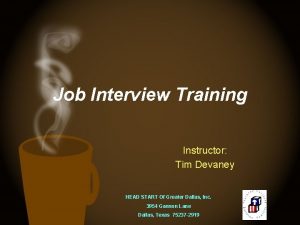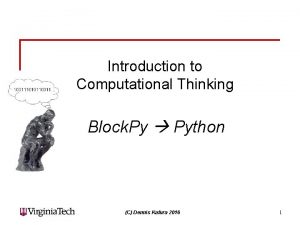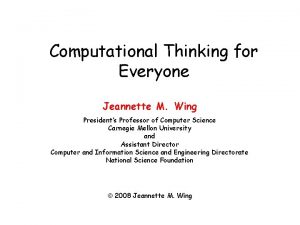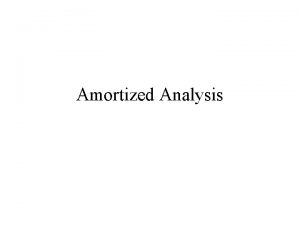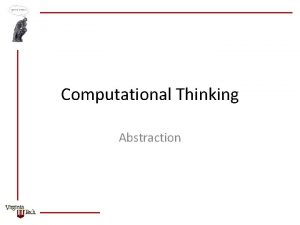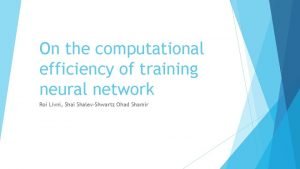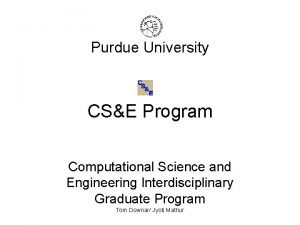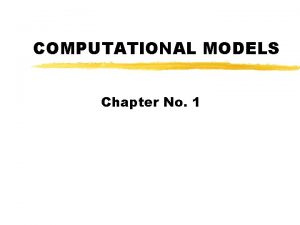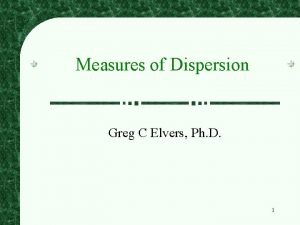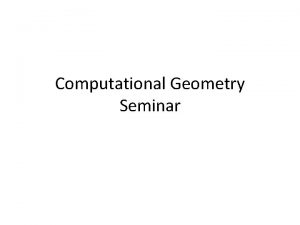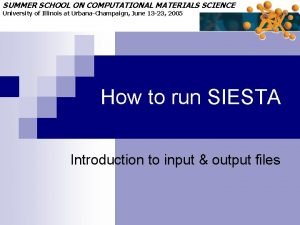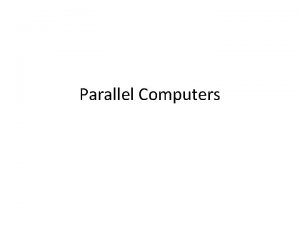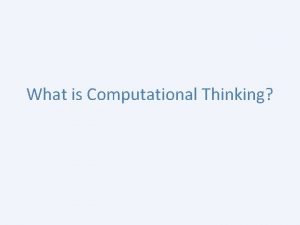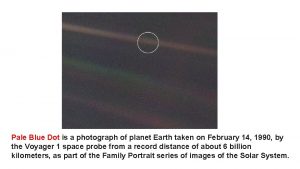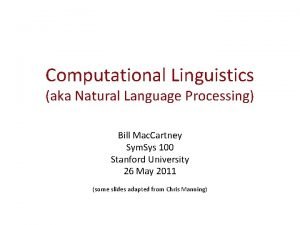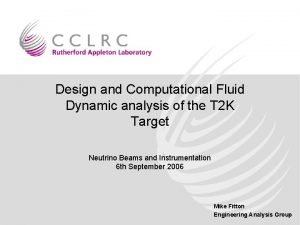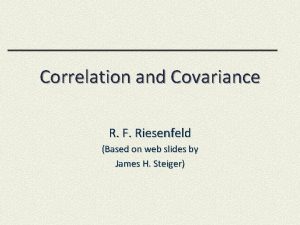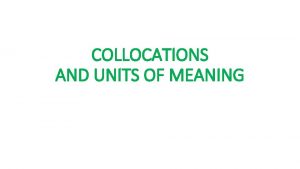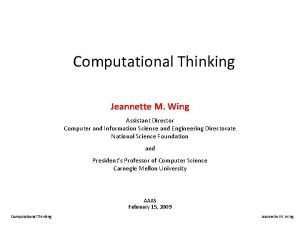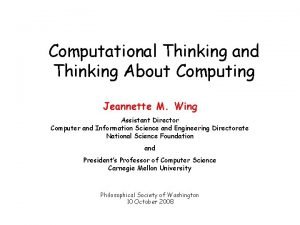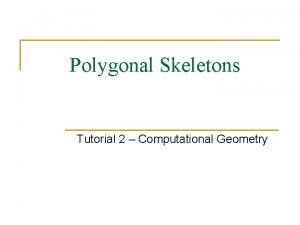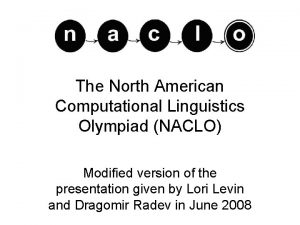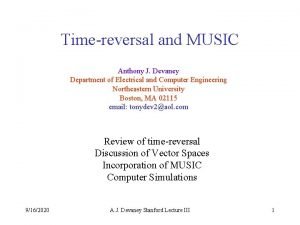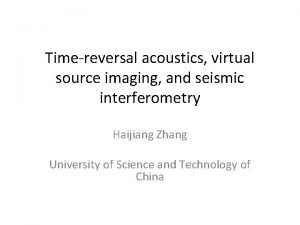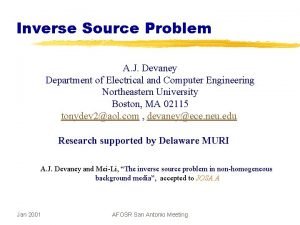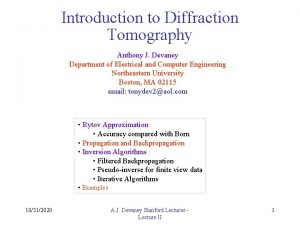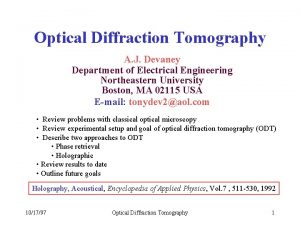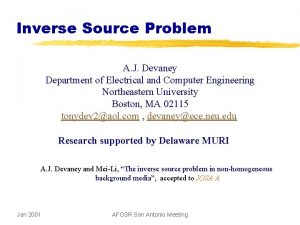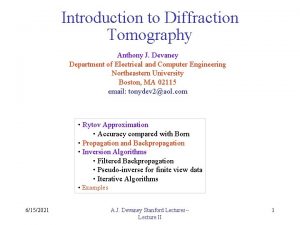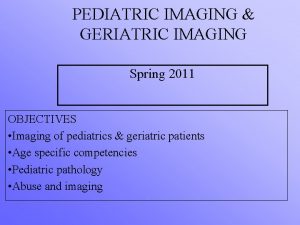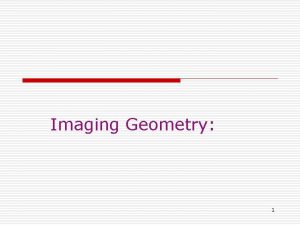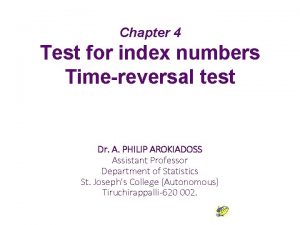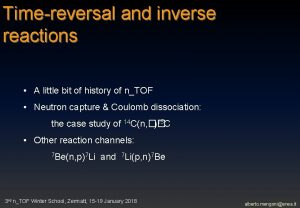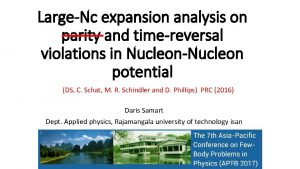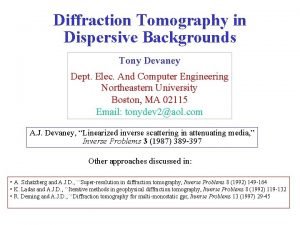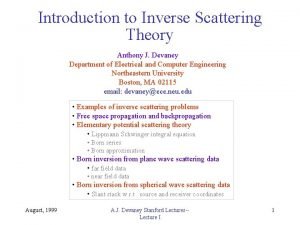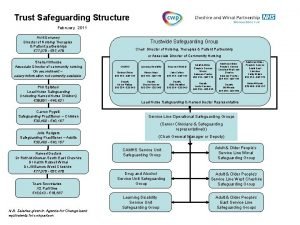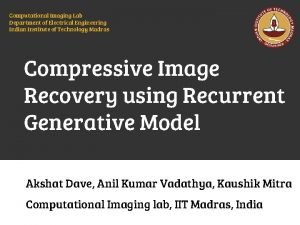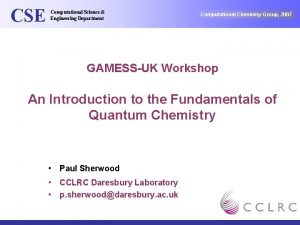Computational Timereversal Imaging A J Devaney Department of





























- Slides: 29

Computational Time-reversal Imaging A. J. Devaney Department of Electrical and Computer Engineering Northeastern University email: devaney@ece. neu. edu Web: www. ece. neu. edu/faculty/devaney/ Talk motivation: Tech. Sat 21 and GPR imaging of buried targets Talk Outline • Overview • Review of existing work • New simulations • Reformulation • Future work and concluding remarks February 23, 2000 A. J. Devaney--BU presentation 1

Experimental Time-reversal Goal is to focus maximum amount of energy on target for purposes of target detection and location estimation In time-reversal imaging a sequence of illuminations is used such that each incident wave is the time-reversed replica of the previous measured return First illumination Intermediate illumination Intervening medium Without time-reversal compensation February 23, 2000 A. J. Devaney--BU presentation Final illumination Intervening medium With time-reversal compensation 2

Computational Time-reversal compensation can be performed without actually performing a sequence of target illuminations Multi-static data Time-reversal processor Computes measured returns that would have been received after time-reversal compensation Target detection Target location estimation Return signals from targets Time-reversal processing requires no knowledge of sub-surface and works for sparse three-dimensional and irregular arrays and both broad band narrow band wave fields February 23, 2000 A. J. Devaney--BU presentation 3

Array Imaging Illumination Measurement Back propagation Focus-on-transmit Focus-on-receive High quality image In conventional scheme it is necessary to scan the source array through entire object space Time-reversal imaging provides the focus-on-transmit without scanning Also allows focusing in unknown inhomogeneous backgrounds February 23, 2000 A. J. Devaney--BU presentation 4

Experimental Time-reversal Focusing Single Point Target Illumination #1 Measurement Phase conjugation and re-illumination Intervening Medium Repeat … If more than one isolated point scatterer present procedure will converge to strongest if scatterers well resolved. February 23, 2000 A. J. Devaney--BU presentation 5

Multi-static Response Matrix Scattering is a linear process: Given impulse response can compute response to arbitrary input Kl, j=Multi-static response matrix = impulse response of medium output from array element l for unit amplitude input at array element j. Single element Illumination February 23, 2000 Single element Measurement Arbitrary Illumination A. J. Devaney--BU presentation Applied array excitation vector e Array output = K e 6

Mathematics of Time-reversal Arbitrary Illumination Applied array excitation vector e Array output = K e Multi-static response matrix = K Array excitation vector = e Array output vector = v v=Ke K is symmetric (from reciprocity) so that K†=K* T = time-reversal matrix = K† K = K*K Each isolated point scatterer (target) associated with different m value Target strengths proportional to eigenvalue Target locations embedded in eigenvector The iterative time-reversal procedure converges to the eigenvector having the largest eigenvalue February 23, 2000 A. J. Devaney--BU presentation 7

Processing Details Multi-static data Time-reversal processor computes eigenvalues and eigenvectors of time-reversal matrix Eigenvalues Return signals from targets Eigenvectors Standard detection scheme Imaging Conventional February 23, 2000 A. J. Devaney--BU presentation MUSIC 8

Multi-static Response Matrix Assumes a set of point targets Specific target Green Function Vector February 23, 2000 A. J. Devaney--BU presentation 9

Time-reversal Matrix February 23, 2000 A. J. Devaney--BU presentation 10

Array Point Spread Function February 23, 2000 A. J. Devaney--BU presentation 11

Well-resolved Targets SVD of T February 23, 2000 A. J. Devaney--BU presentation 12

Vector Spaces for W. R. T. Well-resolved Targets Signal Subspace February 23, 2000 Noise Subspace A. J. Devaney--BU presentation 13

Time-reversal Imaging of W. R. T. February 23, 2000 A. J. Devaney--BU presentation 14

Non-well Resolved Targets Signal Subspace Noise Subspace Eigenvectors are linear combinations of complex conjugate Green functions Projector onto S: February 23, 2000 Projector onto N: A. J. Devaney--BU presentation 15

MUSIC Cannot image N. R. T. using conventional method Noise eigenvectors are still orthogonal to signal space Use parameterized model for Green function: STEERING VECTOR Pseudo-Spectrum February 23, 2000 A. J. Devaney--BU presentation 16

GPR Simulation Antenna Model x z Uniformly illuminated slit of width 2 a with Blackman Harris Filter February 23, 2000 A. J. Devaney--BU presentation 17

Ground Reflector and Time-reversal Matrix February 23, 2000 A. J. Devaney--BU presentation 18

Earth Layer 1 February 23, 2000 A. J. Devaney--BU presentation 19

Down Going Green Function z=z 0 February 23, 2000 A. J. Devaney--BU presentation 20

Non-collocated Sensor Arrays Current Theory limited to collocated active sensor arrays Active Transmit Array Passive Receive Array Experimental time-reversal not possible for such cases Reformulated computational time-reversal based on SVD is applicable February 23, 2000 A. J. Devaney--BU presentation 21

Off-set VSP Survey for DOE February 23, 2000 A. J. Devaney--BU presentation 22

Acoustic Source February 23, 2000 A. J. Devaney--BU presentation 23

Formulation Surface to Borehole to Surface We need only measure K (using surface transmitters) to deduce K+ February 23, 2000 A. J. Devaney--BU presentation 24

Time-reversal Schemes Two different types of time-reversal experiments 1. Start iteration from surface array 2. Start iteration from borehole array. Multi-static data matrix no longer square Two possible image formation schemes 1. Image eigenvectors of Tt Image eigenvectors of Tr 2. February 23, 2000 A. J. Devaney--BU presentation 25

Singular Value Decomposition Surface to Borehole to Surface Normal Equations Surface eigenvectors Start from surface array Time-reversal matrices Start from borehole array Borehole eigenvectors February 23, 2000 A. J. Devaney--BU presentation 26

Transmitter and Receiver Time-reversal Matrices February 23, 2000 A. J. Devaney--BU presentation 27

Well-resolved Targets Well-resolved w. r. t. receiver array Well-resolved w. r. t. transmitter array February 23, 2000 A. J. Devaney--BU presentation 28

Future Work • Finish simulation program • Employ extended target • Include clutter targets • Include non-collocated arrays • Compute eigenvectors and eigenvalues for realistic parameters • Compare performance with standard ML based algorithms • Broadband implementation • Apply to experimental off-set VSP data February 23, 2000 A. J. Devaney--BU presentation 29
 Frc driver station mac
Frc driver station mac Tim devaney
Tim devaney Jennifer devaney md
Jennifer devaney md What is computational thinking?
What is computational thinking? Jeannette m. wing computational thinking
Jeannette m. wing computational thinking Using mathematics and computational thinking
Using mathematics and computational thinking Amortized time big o
Amortized time big o Abstraction computational thinking
Abstraction computational thinking On the computational efficiency of training neural networks
On the computational efficiency of training neural networks Columbia computational linguistics
Columbia computational linguistics Ece 570 purdue
Ece 570 purdue Computational model in computer architecture
Computational model in computer architecture What is dispersion in statistics
What is dispersion in statistics Computational geometry
Computational geometry Integrated computational materials engineering
Integrated computational materials engineering The computational speed of computers
The computational speed of computers Characteristics of computational thinking
Characteristics of computational thinking Computational mathematics
Computational mathematics Xkcd computational linguistics
Xkcd computational linguistics Computational fluid dynamic
Computational fluid dynamic Sp computational formula
Sp computational formula Computational linguist jobs
Computational linguist jobs Computational security
Computational security Jeannette m. wing computational thinking
Jeannette m. wing computational thinking Computational thinking jeannette wing
Computational thinking jeannette wing Chomsky computational linguistics
Chomsky computational linguistics Ideal gas vs perfect gas
Ideal gas vs perfect gas Crl radiology
Crl radiology Straight skeleton
Straight skeleton Computational linguistics olympiad
Computational linguistics olympiad

